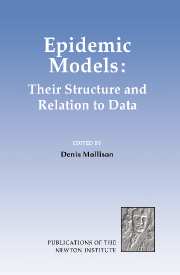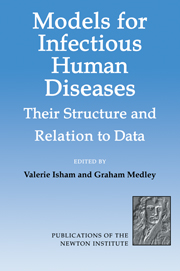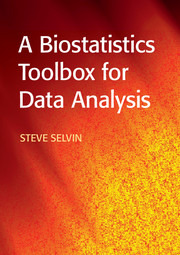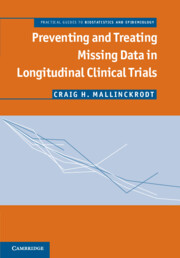Epidemic Models
The problems of understanding and controlling disease present a range of mathematical challenges, from broad theoretical issues to specific practical ones, making epidemiology one of the most vibrant branches of applied ecology. Progress in this field requires interdisciplinary collaboration; leading researchers with a wide range of mathematical expertise and close involvement in applied fields across the social, medical and biological sciences came together for a NATO Advanced Research Workshop marking the opening of a six-month programme on Epidemic Models at the Newton Institute in Cambridge in 1993. This volume is a result of that collaboration and surveys the state of epidemic modelling at the time in relation to basic aims such as understanding, prediction, and evaluation and implementation of control strategies.
- Leading researchers survey the current state of epidemic modelling
- Covers a wide range of relevent approaches, mathematical and statistical, theoretical and applied
- Up-to-date coverage of AIDS and other infectious disease modelling
Product details
July 1995Hardback
9780521475365
444 pages
236 × 156 × 30 mm
0.758kg
58 b/w illus.
Available
Table of Contents
- Preface
- Introduction
- Part I. Conceptual Framework:
- 1. Some problems in the theory of infectious disease transmission and control Klaus Dietz
- 2. The structure of epidemic models Denis Mollison
- 3. Coupling methods in epidemic theory Frank Ball
- 4. Collective epidemic processes: a general modelling approach to the final outcome of SIR epidemics Claude Lefévre and Philippe Picard
- 5. The threshold concept in deterministic and stochastic models Ingemar Nasell
- 6. How does transmission of infection depend on population size? Mart de Jong, Odo Diekmann and Hans Heesterbeek
- 7. The legacy of Kermack and McKendrick Odo Diekmann, Hans Metz and Hans Heesterbeek
- Part II. Spatial Models:
- 8. Incorporating spatial components into models of epidemic spread Andrew Cliff
- 9. Velocities of epidemic spread Hans Metz and Frank van den Bosch
- 10. Spatial epidemic models Richard Durrett
- 11. A perturbation approach to nonlinear deterministic epidemic waves Henry Daniels
- 12. Epidemic plant diseases: a stochastic model of leaf and stem lesion Lynne Billard, P. W. A. Dayananda and Zhen Zhao
- Part III. Nonlinear Time and Space-Time Dynamics:
- 13. Detecting nonlinearity and chaos in epidemic data Stephen Ellner, Ronald Gallant and James Theiler
- 14. Seasonality, demography and the dynamics of measles in developed countries Bryan Grenfell, Ben Bolker and Adam Kleczkowski
- Part IV. Heterogeneity in Human Diseases:
- 15. Grouping in population models Simon Levin
- 16. Core groups and R0s for subgroups in heterogeneous SIS and SI models John Jacquez, Carl Simon and James Koopman
- 17. Data driven network models for the spread of disease Martina Morris
- 18. The effect of antigenic diversity on endemic prevalence Sunetra Gupta, Katherine Trenholme, Martin Cox, Roy Anderson and Karen Day
- Part V. Data Analysis: Estimation and Prediction:
- 19. Statistical challenges of epidemic data Niels Becker
- 20. Primary components of epidemic models Andrew Cairns
- 21. Estimation and prediction in tropical disease control: the example of onchocerciasis Hans Remme, Soumbey Alley and Anton Plaisier
- 22. Some current trends in estimating vaccine efficacy Ira Longini, Elizabeth Halloran and Michael Haber
- 23. Operational modelling of HIV/AIDS to assist public health control Norman Bailey
- Appendix. Problem areas S. Ellner, O. Diekmann and N. Becker.





